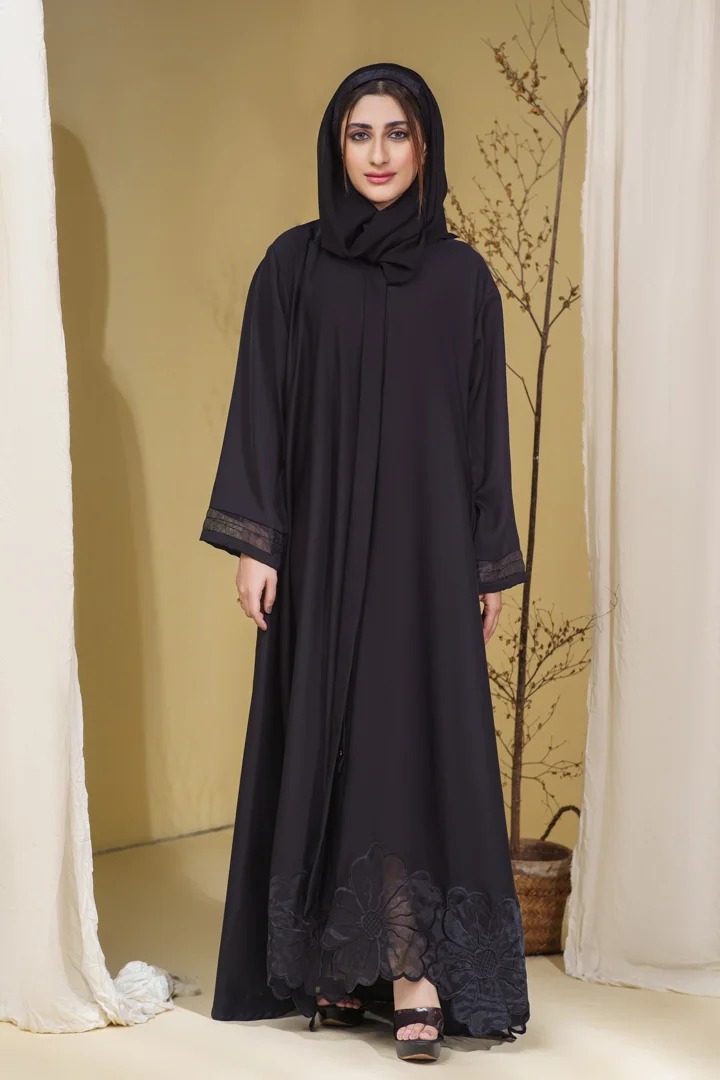Introduction
Women have embraced jilbabs and made them a popular choice for modest fashion. New to modest fashion and looking for a some elements of style and variety? Or do you simply want to increase your modest fashion collection? If so, then this article is for you. This guide will explain what a jilbab is, the different styles available, and how to find the perfect jilbab for yourself.
What is a Jilbab?
A jilbab is a long, loose-fitting outer garment worn by certain Muslim women as an optional type of modesty attire. It can be as basic as a shirt with wide sleeves and three-quarter length, or more formal as labi (buttocks and thighs). The jilbab itself covers most of the body from the shoulders to the ankles and can be worn with or without a hijab. However, the hands, the face and the feet are revealed with a jilbab. These come in varying styles, fabrics and colours. Jilbabs can also be worn for various outings and occasions such as everyday wear, festivities and work.
The History of Jilbabs
Jilbabs have their basis in Islamic history, in which modesty in clothing is paramount. Since the 1980s, wearing the jilbab has become a cultural expression within Islamic tradition. The style has changed and developed since then, becoming as much a pressure point between modernity and tradition as fashion. Jilbabs are made by high-end designers who use them as a way of making faith and style blend. Jilbabs use contemporary fabrics, patterns and designs to target different cultural populations. This means that the jilbab has both a traditional and modern meaning.
Different Styles of Jilbabs
1. Classic Jilbab
The classic jilbab is straight-cut, single-coloured and minimal in design. It is typically made out of a light, cotton or polyester-like material.
2. Modern Jilbab
Modern jilbabs have a flashier flair as well — if you could look for it — with buttons or zippers or even decorative stitching added to otherwise traditional garments, for those more fashion-minded who require modesty with panache.
3. Abaya-Style Jilbab
This style is a simple abaya with billowing, long sleeves and a loose fit. It’s perfect for those who want the traditional look slightly upgraded.
4. Sports Jilbab
The sports jilbab is designed for an active woman. It is made of a flexible, ventilated fabric that can provide for a comfortable experience during sports, hiking or other outdoor activities. It provides you with both the need for modesty and the comfort to participate in sports, hiking or other outdoor activities.
5. Two-Piece Jilbab
The first option is the two‑piece jilbab (shown above), with a long top and a matching skirt or pant that provides more freedom of fit and movement. This style can be easier to wear both practically and stylistically.
Choosing the Right Jilbab for You
1. Consider the Occasion
Another factor to think about is where you’ll be wearing your jilbab. If you’ll be wearing it every day to work or college, you might prefer something casual and easy to wear; if it’s for a special occasion or a gathering, something more embellished can be a great choice.
2. Fabric Matters
Cotton and linen are nice fabrics to use every day but a lightweight transparent fabric like chiffon and silk are better reserved for special occasions.
3. Fit and Comfort
A jilbab needs to be loose enough for your comfort as well as the sake of your modesty, and that’s why you need to pay attention to the cut. It should not cling to you.
4. Colors and Patterns
It’s a smart starting point – especially if you like your colours on the neutral side (black, navy, beige) – then feel free to express your personality in bold colours or understated patterns.
Caring for Your Jilbab
1. Washing Tips
And don’t forget to check the care label on your jilbab. Most are easily hand-washed or machine-washed on a gentle cycle. Silk is very delicate and needs to be dry-cleaned.
2. Storing Your Jilbab
Hang the jilbab to dry, but away from the radiators, so as not to get creases; and keep it on rounded hangers, so that the shoulders don’t go flat.
3. Ironing and Steaming
Iron your jilbab on a low heat setting and steam those materials for a drier look.
Jilbabs in Modern Fashion
If modesty isn’t the only thing a jilbab represents in the 21st century, what else is going into the mix, and why? Jilbabs are making their way into Western consumer consciousness, in new guises and in ever greater numbers. Designers worldwide have been introducing fresh configurations and silhouettes that make tamer jilbabs appear more ‘authentically’ Islamic for one audience, and still more fashionably ‘modern’ for another. Meanwhile, on street fashion websites across the Internet, jilbabs are cropping up in daily summer and winter styles. So far, modesty is not on anyone’s horizon.
Where to Buy Jilbabs Online
With the widest choice available, buying jilbabs on the internet and modish websites is a convenient activity. Below are some of the famous hijab and modest fashion websites:
Modanisa: A global favourite for stylish jilbabs in various styles and colors.
Hijab House: Known for their trendy and high-quality jilbabs.
EastEssence: Offers a wide selection of affordable jilbabs with modern designs.
FAQs about Jilbabs
1. What is the difference between a jilbab and an abaya?
A jilbab is cut closer to the body and may have fastenings (buttons, zip, etc), whereas the abaya is a simple long, open cloak. The purpose of both is that of modesty.
2. Can jilbabs be worn in hot weather?
Yes of course, a jilbab made of light weight, breathable material like cotton or linen would be perfect for the hot weather and help you remain cool.
3. Are jilbabs suitable for professional settings?
Certainly! Many jilbabs are designed in a smart and professional way that makes them suitable for the workplace.
4. How do I style a jilbab for special occasions?
Pair it with bold accessories – an elaborate belt, a chic hijab, or stylish jewellery – for added elegance on a night out.
5. Can jilbabs be tailored to fit?
Yes, of course: it is not difficult to tailor a jilbab so that it fits like a glove if you are so inclined – and many women, particularly in my home town of Jakarta,








